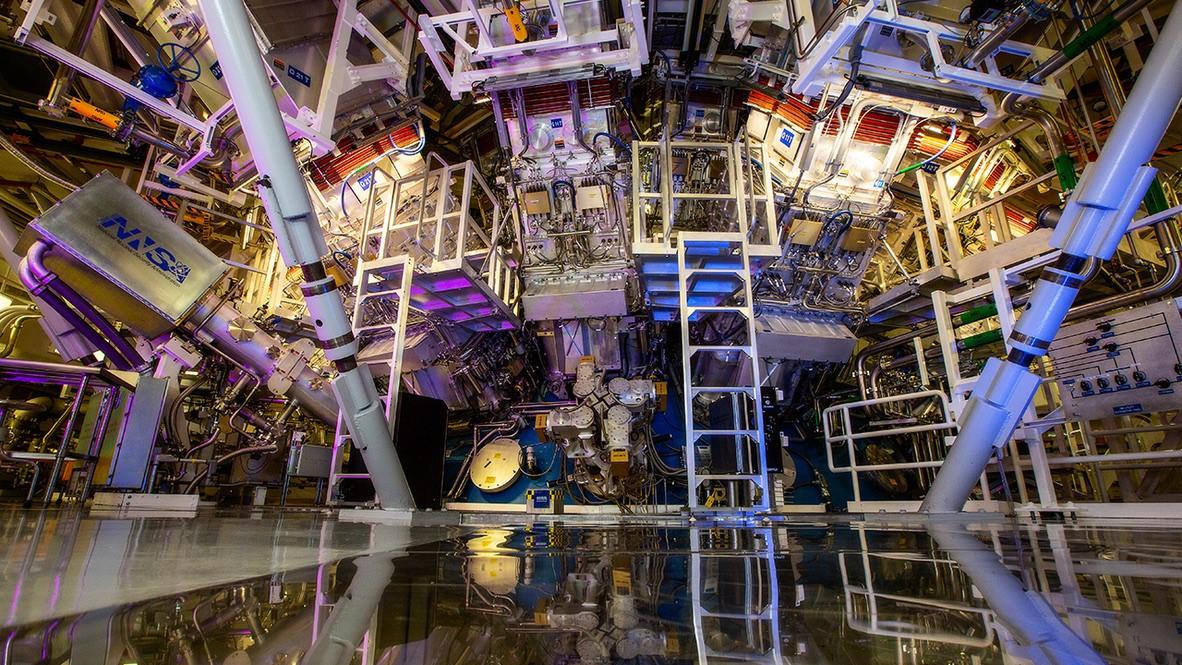An important tool for determining the shape and integrity of the compressed Deuterium-Tritium fuel assembly in Inertial Fusion Energy (IFE) implosions is to measure the angular distribution of the emitted high energy neutrons. The current state-of-the-art for making these measurements uses compact Real-Time Nuclear Activation Detectors (RTNADs) placed around the target chamber. While RTNAD spectrometers allow the signal from the activated elements to be separated from the backgrounds, at high neutron fluxes (> 3x1011 neutrons/cm2) the background overwhelms the electronics. Consequently, there is a growing need to be able to characterize high yield shots occurring at high rates.
This novel detector for characterizing IFE implosions is an alternative to the current RTNADs to measure neutron fluxes > 3x1011 neutrons/cm2 at high shot rates. The detector consists of a stack of small square metal wafers separated by thin insulating spacers. Every other wafer is held at high voltage while the remaining wafers are grounded. The stack acts as an ionization chamber and will detect the passage of charged particles in a manner similar to a Geiger counter. To detect high energy neutrons, the stacks are made of metals containing isotopes that become activated when struck by high energy neutrons. The activated isotopes decay into electrons or gamma rays, some of which interact in the wafers and also produce electrons that enter the gap between wafers producing a detectible avalanche pulse at the signal terminal. The detector produces an electrical pulse proportional to the neutron yield of each target implosion thus allowing the energy output of the IFE facility to be continuously monitored.
LLNL’s novel apparatus for characterizing neutrons produced in high yield and high shot rate Inertial Fusion Energy implosions has several advantages over other approaches:
- Enables characterization of high neutron flux (> 3x1011 neutrons/cm2) in IFE implosions
- Enables characterization of high IFE implosion shot rates
- Can be produced in a compact form factor
- Can be built for long operational lifetime
- Characterizing high yield, high shot rate implosions at IFE facilities
Current stage of technology development: TRL 2 (March 2023)
LLNL has filed for patent protection on this invention.


